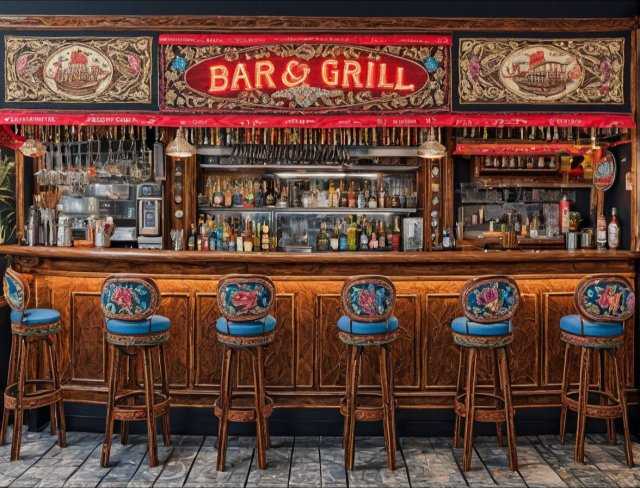Eat, Drink and Be Merry
An Introduction to Food and Drink Embroidery
Introduction
Embroidery, an art form that has adorned fabrics for centuries, takes on a delectable twist when it embraces the world of food and drink. From sumptuous feasts to refreshing libations, food and drink embroidery encapsulates the essence of culinary delights in stitches. This article aims to delve into the fascinating realm of food and drink embroidery, exploring its meanings, cultural significance, and artistic expressions.
Delving deeper, food and drink embroidery serves as a bridge between the realms of art and gastronomy, merging the tactile beauty of fabric with the sensory pleasures of food. With each meticulously crafted stitch, artisans not only capture the visual allure of culinary creations but also evoke the aromas, flavors, and emotions associated with them. This intricate fusion of mediums transforms embroidered pieces into more than mere decorations; they become portals to a world of indulgence and creativity, inviting viewers to immerse themselves in the delicious tapestry of culinary artistry.
Exploring Food and Drink Embroidery
Food and drink embroidery is a multifaceted art form that transcends mere decoration, offering a rich tapestry of visual narratives and cultural expressions. At its core, this unique medium celebrates the timeless allure of gastronomy, inviting viewers to indulge in the beauty and symbolism of culinary delights. Each embroidered piece serves as a canvas upon which artisans weave intricate stories, capturing the essence of food and drink with remarkable detail and precision.
One of the most captivating aspects of food and drink embroidery is its ability to evoke sensory experiences through stitches and threads. Whether it’s the luscious sheen of ripe fruit, the frothy bubbles of a freshly poured pint, or the delicate folds of a pastry, embroidered depictions of food and drink stimulate the imagination and tantalize the senses. Viewers can almost taste the flavors, smell the aromas, and feel the textures as they gaze upon these masterfully crafted works of art.
Moreover, food and drink embroidery is steeped in cultural significance, drawing inspiration from culinary traditions, rituals, and symbolism from around the world. In many cultures, embroidered food motifs carry deep meanings, symbolizing abundance, fertility, prosperity, and hospitality. From the ornate table linens of a traditional feast to the embroidered motifs adorning ceremonial garments, food and drink embroidery reflects the rich tapestry of culinary customs and beliefs passed down through generations.
Beyond its cultural resonance, food and drink embroidery also serves as a medium for personal expression and creativity. Artists and hobbyists alike are drawn to its versatility, using it as a means to convey their love for food, celebrate special occasions, or simply showcase their culinary passions. Whether it’s a meticulously embroidered recipe framed as kitchen decor or a whimsical tea towel adorned with food themed motifs, these creations reflect the unique tastes and personalities of their makers.
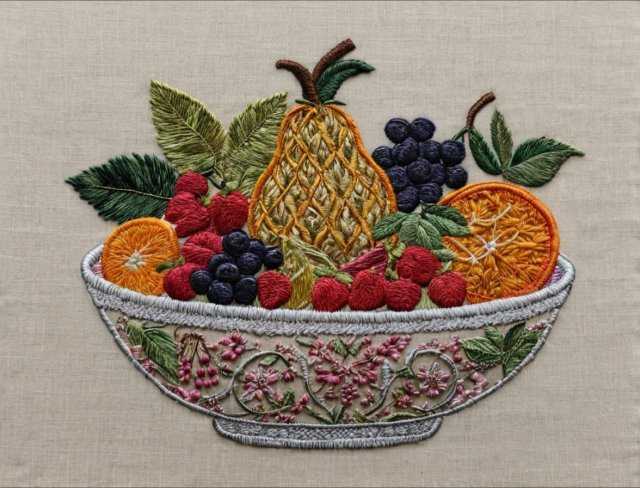
In essence, exploring food and drink embroidery is an invitation to journey into the heart of gastronomy, where artistry meets appetite and tradition intertwines with innovation. Through its vibrant colors, intricate details, and rich symbolism, this captivating art form celebrates the universal joys of food and drink, offering a feast for the eyes and nourishment for the soul. As we unravel the threads of this delectable tapestry, we discover not only the beauty of craftsmanship but also the profound connections between culture, creativity, and culinary artistry.
The Art of Culinary Creativity
At the heart of food and drink embroidery lies the art of culinary creativity, a symphony of imagination and skill that transforms ordinary fabric into extraordinary visual feasts. Much like a chef crafting a culinary masterpiece, embroiderers wield their needles with precision and passion, infusing each stitch with the essence of gastronomy. This artistry goes beyond mere replication, delving deep into the nuances of flavor, texture, and presentation to capture the very essence of culinary delight.
Embroiderers approach their craft with a keen eye for detail, meticulously recreating the intricate patterns and textures found in the culinary world. From the delicate petals of a flower to the intricate lattice of a pie crust, every element is rendered with remarkable accuracy and finesse, paying homage to the artistry of the kitchen. The art of culinary creativity demands not only technical proficiency but also a deep understanding of food aesthetics, allowing embroiderers to translate the sensory experiences of taste and smell into visual form.
Moreover, the art of culinary creativity extends beyond mere replication, inviting embroiderers to infuse their work with personal flair and innovation. Just as chefs experiment with flavors and techniques to create new culinary delights, embroiderers push the boundaries of their craft, exploring new materials, stitches, and styles to bring their visions to life. Whether it’s incorporating mixed media elements or experimenting with unconventional motifs, these creative endeavors breathe new life into the age old tradition of food and drink embroidery, adding layers of depth and complexity to the art form.
Yet, perhaps the most captivating aspect of the art of culinary creativity is its ability to evoke emotion and storytelling through stitches. Each embroidered piece tells a unique tale, whether it’s a nostalgic homage to a beloved family recipe or a whimsical interpretation of a culinary adventure. Viewers are invited to immerse themselves in these visual narratives, allowing their imaginations to roam free as they explore the rich tapestry of culinary creativity.
In essence, the art of culinary creativity is a celebration of the boundless possibilities of gastronomy, where imagination knows no limits and every stitch tells a delicious tale. Through its intricate details, innovative techniques, and heartfelt storytelling, food and drink embroidery invites us to savor the beauty of culinary artistry in all its forms. As we behold these masterfully crafted creations, we are reminded of the transformative power of creativity and the enduring allure of the culinary world.
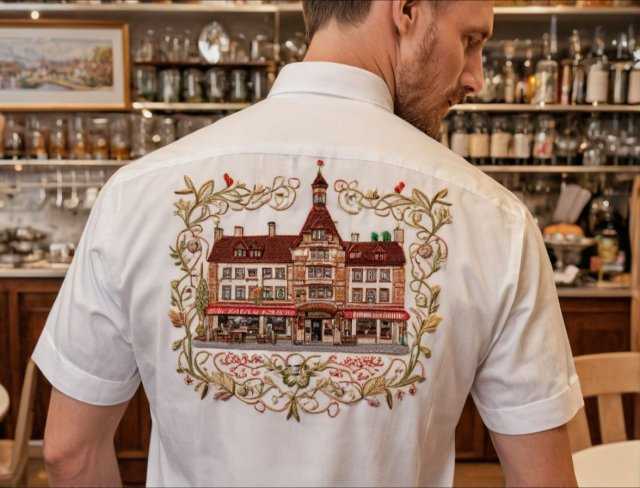
Symbolism and Significance
Symbolism and significance lie at the heart of food and drink embroidery, infusing each stitch with layers of meaning and cultural resonance. Beyond their aesthetic appeal, embroidered motifs carry deep symbolism, reflecting the intrinsic connections between food, culture, and human experience. From ancient traditions to contemporary expressions, these symbolic representations offer insights into the values, beliefs, and rituals that shape our relationship with food.
In many cultures, embroidered food motifs serve as powerful symbols of abundance, prosperity, and hospitality. Whether it’s a lavish banquet scene or a bountiful harvest depicted in stitches, these images evoke a sense of abundance and plenty, celebrating the joys of nourishment and sustenance. Moreover, embroidered food motifs often hold spiritual significance, symbolizing the cycle of life, growth, and renewal inherent in agricultural practices and culinary traditions.
Beyond their symbolic meanings, embroidered food motifs also carry social and cultural significance, reflecting the customs and rituals surrounding communal dining and social gatherings. In many societies, embroidered table linens and ceremonial garments play a central role in festive occasions and special events, serving as tangible expressions of hospitality and generosity. Through intricate patterns and motifs, these textiles convey messages of warmth, welcome, and camaraderie, fostering connections and forging bonds within communities.
Moreover, embroidered food motifs offer a window into the culinary customs and traditions of different cultures, highlighting the diverse ways in which food is celebrated and revered around the world. Whether it’s the intricate floral motifs of Chinese silk tapestries or the vibrant patterns of Mexican folk embroidery, each cultural tradition brings its unique perspective and symbolism to the art of food and drink embroidery, enriching the tapestry of human experience with its own distinct flavors and meanings.
In essence, symbolism and significance imbue food and drink embroidery with depth and complexity, transforming it from a mere decorative art form into a powerful means of cultural expression and storytelling. As viewers engage with these embroidered creations, they are invited to contemplate the deeper meanings embedded within each stitch, gaining insights into the rich tapestry of human beliefs, traditions, and experiences that shape our relationship with food and drink.
Innovation and Inspiration
Innovation and inspiration are the driving forces behind the evolution of food and drink embroidery, propelling the art form into new realms of creativity and expression. As with any artistic endeavor, embroiderers continually seek to push the boundaries of their craft, exploring innovative techniques, materials, and motifs to breathe fresh life into their creations. From traditional embroidery stitches to cutting edge digital techniques, the world of food and drink embroidery is a dynamic landscape where tradition meets innovation in a vibrant tapestry of creativity.
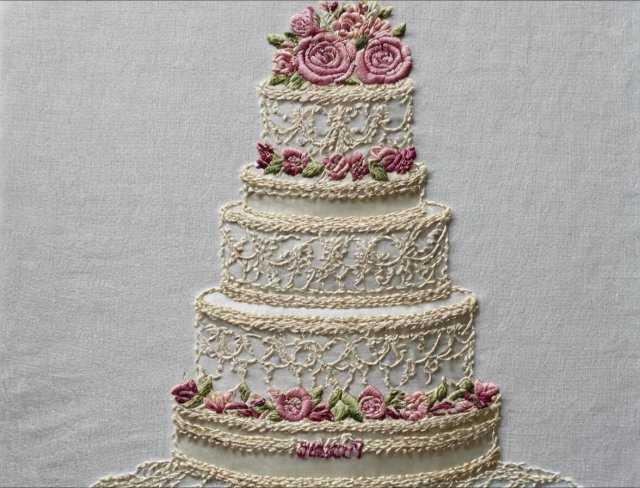
One of the hallmarks of innovation in food and drink embroidery lies in the exploration of new materials and textures. While traditional embroidery techniques often utilize thread and fabric, modern embroiderers are experimenting with a wide range of materials, including beads, sequins, and even unconventional objects like food packaging or recycled materials. These innovative approaches not only add depth and dimension to embroidered pieces but also challenge traditional notions of what constitutes embroidery, pushing the boundaries of the art form in exciting new directions.
Moreover, inspiration plays a crucial role in fueling the creative process of food and drink embroidery, providing artists with the spark of imagination needed to bring their visions to life. Inspiration can be found in a myriad of sources, from the rich tapestry of culinary traditions to personal memories, experiences, and emotions associated with food. Whether it’s the vibrant colors of a farmer’s market or the intricate patterns of a vintage cookbook, each source of inspiration offers a wealth of possibilities for embroiderers to explore and interpret in their work.
Innovation and inspiration also intersect in the realm of design, where embroiderers draw upon a diverse array of influences to create unique and captivating compositions. From classical still life paintings to contemporary food photography, the world of visual arts provides a rich tapestry of inspiration for embroiderers to draw upon, infusing their work with elements of realism, abstraction, and imagination. By blending traditional techniques with modern design principles, embroiderers create pieces that resonate with audiences on both aesthetic and emotional levels, offering new perspectives on the art of food and drink embroidery.
In essence, innovation and inspiration are the lifeblood of food and drink embroidery, driving the art form forward and enriching it with new ideas, techniques, and perspectives. As embroiderers continue to explore the boundless possibilities of their craft, they not only honor the traditions of the past but also pave the way for future generations of artists to follow in their footsteps. Through their innovative spirit and creative vision, they ensure that food and drink embroidery remains a vibrant and dynamic art form, reflecting the ever changing landscape of gastronomy and culture.
Cultural Influences and Traditions
Cultural influences and traditions are deeply woven into the fabric of food and drink embroidery, shaping its motifs, techniques, and meanings in profound ways. Across diverse societies and civilizations, embroidered textiles have played a central role in the expression of cultural identity, reflecting the unique customs, beliefs, and values of each community. From ceremonial garments to everyday household items, these embroidered treasures serve as tangible links to the past, preserving and transmitting cultural heritage from one generation to the next.
In many cultures, embroidered textiles are imbued with symbolic meanings, serving as powerful expressions of identity, status, and belonging. Whether it’s the intricate patterns of indigenous textiles in Latin America or the elaborate motifs of traditional bridal attire in South Asia, each embroidered piece carries layers of meaning that speak to the values and aspirations of its creators and wearers. Through these richly adorned textiles, cultural traditions are celebrated, stories are told, and connections are forged within communities.
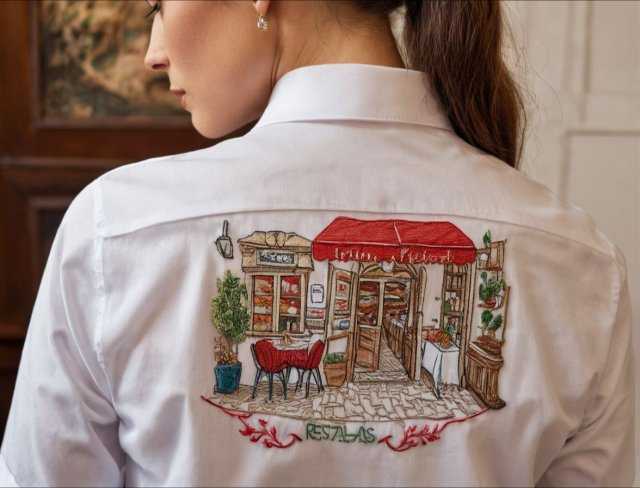
Moreover, food and drink embroidery often reflects the culinary customs and traditions of different cultures, offering insights into the diverse ways in which food is revered and celebrated around the world. From the elaborate table settings of a Japanese tea ceremony to the embroidered motifs adorning ceremonial feasts in Middle Eastern cultures, food and drink embroidery serves as a visual celebration of culinary heritage, reinforcing cultural identity and fostering a sense of belonging among participants.
Beyond its symbolic and cultural significance, food and drink embroidery also plays a practical role in everyday life, serving as a means of preserving and protecting culinary traditions. In many cultures, embroidered textiles are used to adorn dining tables during festive occasions, adding an extra layer of beauty and elegance to the dining experience. Additionally, embroidered linens and garments are often passed down through generations as cherished heirlooms, serving as tangible reminders of family traditions and cultural heritage.
In essence, cultural influences and traditions are integral to the art of food and drink embroidery, infusing each stitch with layers of meaning and significance. As embroiderers draw upon the rich tapestry of cultural heritage for inspiration, they not only pay homage to the traditions of the past but also contribute to the ongoing evolution of the art form, ensuring that it remains a vibrant and dynamic expression of cultural identity and creativity. Through their work, they celebrate the diversity of human experience and forge connections that transcend boundaries of time, place, and culture.
Contemporary Trends
In the dynamic world of food and drink embroidery, contemporary trends reflect the ever changing tastes and preferences of modern audiences. Embroiderers today draw inspiration from a diverse array of sources, including popular culture, fashion, and digital media, to create pieces that resonate with today’s aesthetics. One prominent trend in contemporary food and drink embroidery is the fusion of traditional techniques with modern design sensibilities. Artists experiment with bold colors, geometric shapes, and abstract compositions, infusing their work with a fresh and dynamic energy that appeals to a younger generation of enthusiasts.
Furthermore, contemporary food and drink embroidery often incorporates elements of humor, wit, and irony, adding an unexpected twist to familiar motifs. From playful interpretations of classic dishes to cheeky references to foodie culture, these embroideries inject a sense of whimsy and lightheartedness into the art form. Additionally, contemporary embroiderers are exploring new materials and textures, incorporating unconventional elements such as metallic threads, sequins, and even three dimensional embellishments to create pieces that are as tactile as they are visually striking.
Another notable trend in contemporary food and drink embroidery is the emphasis on sustainability and ethical consumption. As awareness of environmental and social issues grows, artists are increasingly drawn to eco friendly and ethical practices in their work. This includes using organic or recycled materials, supporting fair trade initiatives, and advocating for responsible production and consumption. Through their embroidery, these artists not only celebrate the pleasures of gastronomy but also promote awareness and appreciation for the natural world and the communities that sustain it.
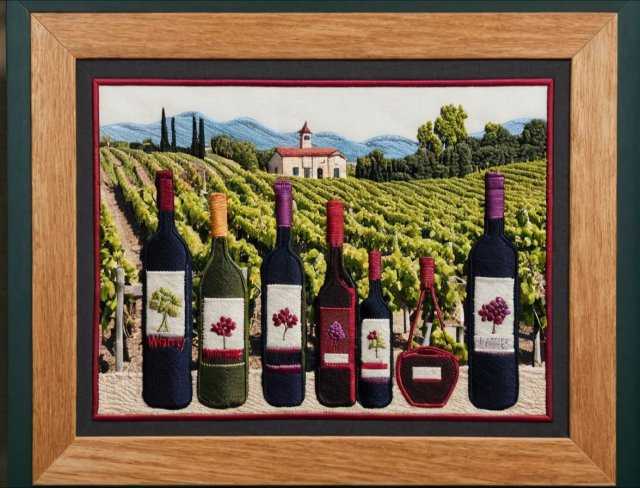
Moreover, contemporary food and drink embroidery often blurs the lines between traditional craft and digital technology, embracing the possibilities offered by digital embroidery machines and computerized design software. This fusion of analog and digital techniques allows artists to create intricate and complex patterns with precision and efficiency, expanding the creative possibilities of the medium. Additionally, social media platforms and online communities play a significant role in shaping contemporary trends in food and drink embroidery, providing a platform for artists to showcase their work, connect with fellow enthusiasts, and collaborate on new projects.
Overall, contemporary trends in food and drink embroidery reflect a dynamic and vibrant landscape of creativity and innovation. From bold and experimental designs to eco conscious and socially engaged practices, contemporary embroiderers are redefining the boundaries of the art form, creating pieces that are as relevant and resonant today as they are timeless. As the world of food and drink embroidery continues to evolve, one thing remains clear: the artistry and ingenuity of embroiderers will continue to inspire and delight audiences for generations to come.
Practical Applications
Beyond its aesthetic appeal, food and drink embroidery finds a multitude of practical applications in various aspects of daily life. In home decor, embroidered textiles add warmth, charm, and personality to living spaces, particularly in areas associated with dining and entertaining. Tablecloths, napkins, and placemats adorned with food and drink motifs transform ordinary dining tables into elegant and inviting settings, enhancing the dining experience for both hosts and guests. Similarly, embroidered kitchen linens, such as tea towels and aprons, infuse culinary spaces with a sense of nostalgia and whimsy, making everyday tasks more enjoyable and inspiring.
Furthermore, food and drink embroidery extends its influence into the realm of fashion and personal expression. Garments and accessories embellished with food themed motifs serve as playful and eye catching statements, reflecting the wearer’s personality, interests, and sense of humor. From embroidered patches and badges adorning denim jackets to intricate food inspired embroidery on tote bags and hats, these pieces add a touch of whimsy and individuality to everyday attire, sparking conversations and eliciting smiles wherever they go.
Moreover, the practical applications of food and drink embroidery extend beyond the home and wardrobe to encompass commercial and promotional endeavors. Businesses in the food and beverage industry often utilize embroidered merchandise as part of their branding and marketing strategies, leveraging the visual appeal and tactile quality of embroidered textiles to promote their products and services. Customized embroidered items, such as logo embroidered uniforms, aprons, and tote bags, serve as effective promotional tools, allowing businesses to showcase their brand identity and engage with customers in a memorable and meaningful way.
Additionally, food and drink embroidery plays a role in commemorating special occasions and milestones in life. Personalized embroidered gifts, such as monogrammed table linens or embroidered anniversary dates, serve as thoughtful and enduring tokens of affection, celebrating cherished memories and relationships. Similarly, embroidered heirlooms passed down through generations serve as tangible links to family history and tradition, preserving the stories and legacies of loved ones for years to come.
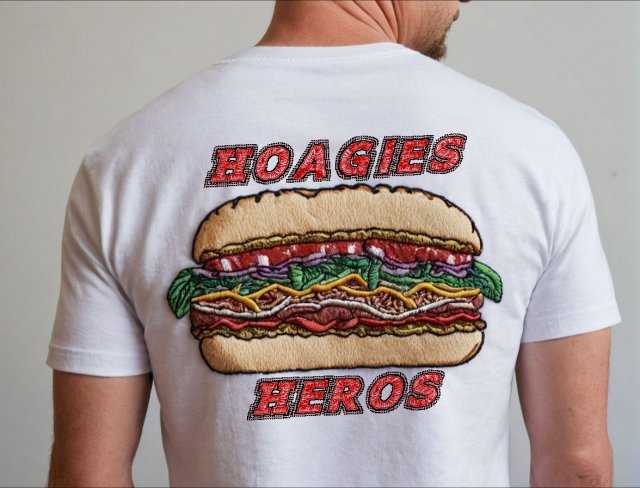
In essence, the practical applications of food and drink embroidery are as diverse and versatile as the art form itself. From enhancing the ambiance of dining spaces to adding personality to fashion and branding, embroidered textiles enrich our lives in countless ways, infusing everyday moments with beauty, joy, and meaning. As we continue to incorporate food and drink embroidery into our homes, wardrobes, and businesses, we celebrate not only the artistry and craftsmanship of embroiderers but also the enduring allure of gastronomy and the shared experiences that unite us all.
Conclusion
In conclusion, food and drink embroidery stands as a testament to the enduring allure of gastronomy, weaving together the threads of artistry, culture, and tradition into a rich tapestry of visual delight. From its origins in ancient civilizations to its modern manifestations in contemporary art, food and drink embroidery continues to captivate audiences with its beauty, symbolism, and cultural resonance. As we journey through the intricate landscapes of embroidered motifs and patterns, we are reminded of the universal joys of food and drink, and the profound connections they forge between people and cultures around the world.
Furthermore, the art of food and drink embroidery serves as a reminder of the power of creativity to transcend boundaries and foster understanding. In a world marked by division and discord, embroidered pieces offer a glimpse into the shared human experience, celebrating the universal language of food and the myriad ways in which it brings people together. Through its vibrant colors, intricate designs, and rich symbolism, food and drink embroidery invites us to embrace our differences and revel in the beauty of our shared cultural heritage.
As we bid farewell to this exploration of food and drink embroidery, let us carry with us the lessons learned from its stitches and patterns. Let us celebrate the diversity of culinary traditions, honor the richness of cultural heritage, and cherish the connections that unite us as members of the global community. And as we continue to unravel the threads of this delectable art form, may we find inspiration, joy, and nourishment in every stitch, and may the delicious tale of food and drink embroidery continue to unfold for generations to come.
Now that you have read through this article, feel free to SHOP for products we have created. If you are looking for something special which isn’t in our store, feel free to contact us.

